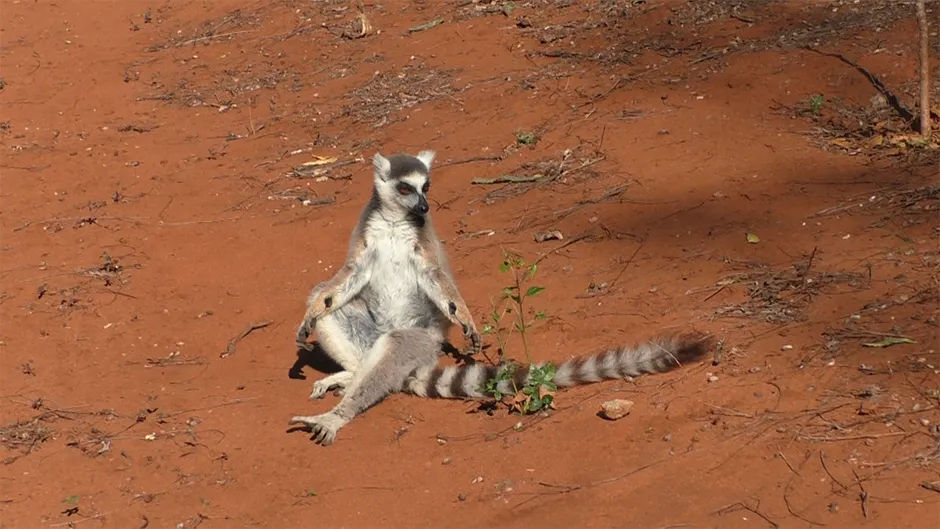Lemurs, it seems, know that a dab of perfume can make all the difference when wooing a mate. Male ring-tailed lemurs secrete a fruity and floral aroma from scent glands above their wrists, which they rub against their fluffy tails before waft the sweet scent at potential female mates.
Now, researchers have identified the ingredients that make this lemur cologne so alluring.
Lemurs are a group of primates that live only on the African island of Madagascar. Both male and female ring-tailed lemurs sport these glands, which secrete a clear liquid that’s used to perform scent markings to advertise social rank or reproductive status, or to mark territory.
But the males also use it to attract females – a behaviour known as ‘stink flirting’.
Read more about primates:
- Aye-aye the first primate with a sixth finger
- Koalas want to be like you, walk like you, talk like you, too
For this study, a team of researchers monitored frisky lemurs at the Japan Monkey Centre in Aichi and the Research Institute of Evolutionary Biology in Tokyo.
The researchers found that female lemurs sniffed male scent markings more often and for longer during the breeding season. When presented with the male scent, the females showed a preference for the fruity perfume, compared to the more bitter-smelling scent that the males produce in the off-season.
“Females sniff the floral and fruity scent for a few more seconds than the controls and occasionally even lick it,” said Prof Kazushige Touhara, lead author and biochemist at the University of Tokyo. “Although this sounds like a very short time, it’s enough to … evoke curiosities in the male.”

The team used ‘gas chromatography–mass spectrometry’ to analyse the fruity scent’s chemical make-up, finding high levels of three compounds known as ‘aldehydes’.
The amounts of these compounds increased with male testosterone level, and, when presented with the compounds, female lemurs were only interested in the mixture that contained all three.
The results suggest that these aldehydes are lemur sex pheromones – the first to be identified in a primate. Next, the researchers hope to find out whether the compounds influence the females’ sexual behaviour directly, increasing the mating success of the most fragrant males.
Reader Q&A: How do animals recognise other members of their own species?
Asked by: Peter Mansor, Sydney
In much the same way as we do – using a combination of appearance, calls, behaviour and smell.
The exact contribution of each sense to the overall assessment varies from one species to another, according to how generally reliant they are on that sense. Most mammals have a better sense of smell than we do and will trust their nose ahead of their eyes.
Recognising your own species is important when you’re looking for a mate because interspecies mating is generally unviable or, at best, produces sterile offspring. Courtship rituals and mating calls are partly about attracting the best possible mate and fending off love rivals, but they also function as a species recognition cue as well.
But species recognition isn’t always hard-wired into animals. For example, lots of waterbirds will imprint on the first moving thing they see when they hatch.
Read more: